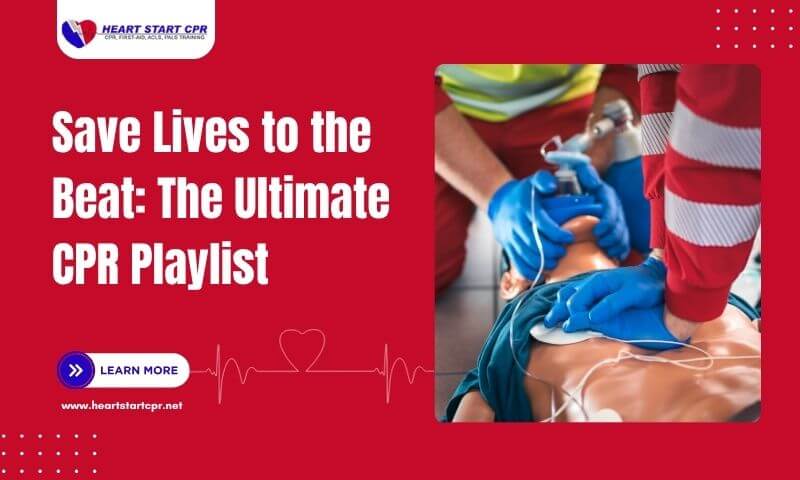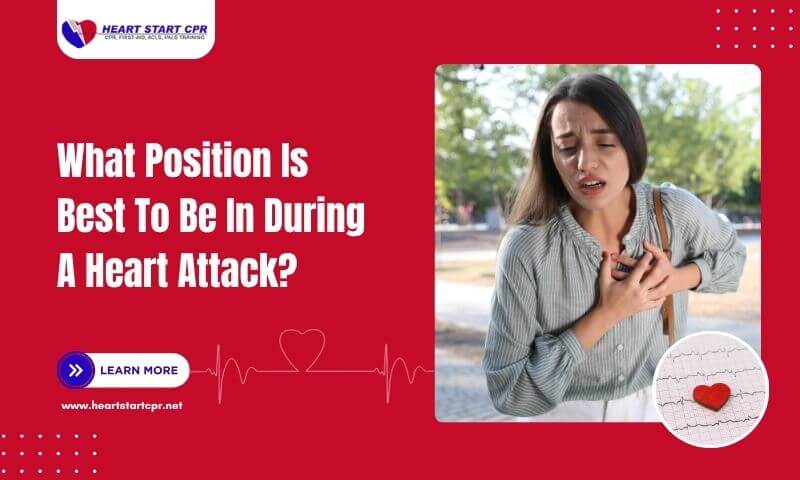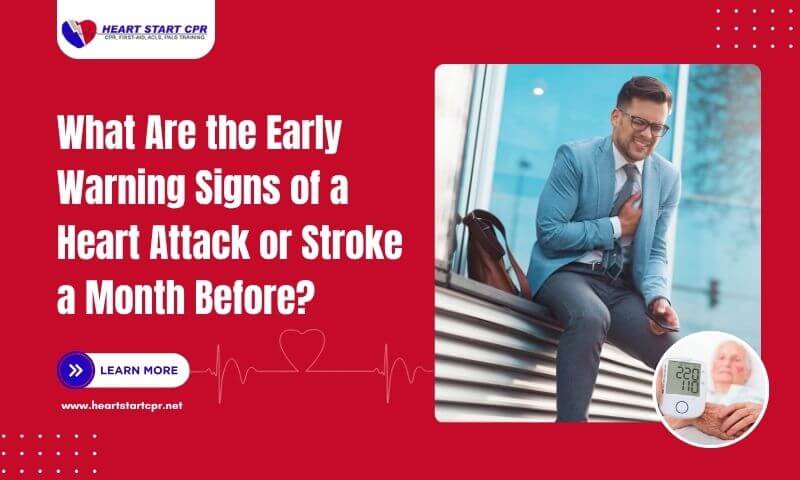Imagine you are at home and someone suddenly collapses. You check their pulse but cannot find one. The Electrocardiogram (ECG) shows a normal looking rhythm, but the heart is not pumping blood. This is called PEA rhythm, or Pulseless Electrical Activity, a serious type of cardiac arrest. Even though the heart seems to work electrically, there is no pulse or blood flow, so vital organs do not get oxygen.
Since PEA rhythm is a non shockable rhythm, a defibrillator will not help. Treatment focuses on CPR and finding the cause. In this guide, you will go through what PEA rhythm is, why it happens, and how it is treated.
What Are the Characteristics of PEA Heart Rhythm?
The key characteristics of PEA include:
1. Electrical Activity
The ECG shows organized electrical activity, which can resemble normal sinus rhythm, bradycardia, or other arrhythmias. However, despite the presence of electrical signals, the heart muscle fails to contract effectively.
2. Absence of Pulse
Although the electrical signals are present, there is no detectable pulse or blood flow. This lack of pulse means the body’s organs and tissues are not receiving the oxygenated blood they need.
3. Varied Rhythms
The rhythm seen on the ECG can vary significantly, ranging from a normal sinus rhythm to more irregular patterns like bradycardia, accelerated idioventricular rhythm or even asystole. What distinguishes PEA is that, regardless of the rhythm, the heart cannot generate the mechanical force required for blood circulation.
Also read: What Rhythms Do I Need to Know for ACLS?
4. No Corresponding Mechanical Contraction
Unlike other arrhythmias, where the heart may be beating irregularly or ineffectively(such as ventricular fibrillation), PEA involves a failure of mechanical contraction altogether despite the presence of electrical activity, leading to circulatory failure. This shows PEA requires immediate attention.
What Causes Pulseless Electrical Activity (PEA)? Hs and Ts Explained
PEA can be caused by a variety of reversible factors known as the Hs and Ts:
Hs:
- Hypoxia: Low oxygen levels in the blood.
- Hypovolemia: Severe loss of blood or fluid volume.
- Hydrogen Ion (Acidosis): Blood pH imbalance, either metabolic or respiratory acidosis.
- Hypothermia: A dangerously low body temperature.
- Hyperkalemia or Hypokalemia: Imbalance of potassium levels.
- Hypoglycemia: Low blood sugar levels.
Ts:
- Tension Pneumothorax: Air trapped in the chest cavity, preventing the lungs from fully inflating.
- Tamponade (Cardiac Tamponade): Fluid accumulation around the heart, restricting its ability to pump blood.
- Toxins: Drug overdoses or poisoning (Beta-blockers or calcium channel blockers).
- Thrombosis: Clot formation in the coronary arteries (heart attack) or lungs (pulmonary embolism).
The difference between PEA and other Cardiac Arrest Rhythms
Unlike Ventricular Fibrillation(VF) or Ventricular Tachycardia(VT), where electrical activity is irregular or excessively rapid, Pulseless Electrical Activity(PEA) is characterized by organized electrical rhythms without a corresponding pulse. In shockable rhythms like VF and VR, defibrillation is the primary treatment, as the issue stems from abnormal electrical activity.
However, in PEA, the heart’s electrical system is functioning to some degree, but the heart is unable to contract effectively and pump blood, making defibrillation ineffective. Therefore, addressing the underlying cause of pea, such as hypoxia, acidosis, or cardiac tamponade is important for restoring circulation. Early identification and rapid treatment are key to improving outcomes in PEA cases.
Also read: Asystole vs PEA
How to Recognize PEA in a Patient?
Recognizing PEA in a patient involves several key observations:
1. No Pulse
Checking for a pulse using palpation or an electrocardiogram (ECG).
2. ECG Findings:
The heart may show an organized rhythm on the ECG (such as sinus rhythm, pulseless bradycardia, or other rhythms), but this does not correlate with effective heart function. There will be no pulse or blood circulation.
3. Signs of Cardiac Arrest
The patient will be unresponsive, with no breathing or circulation. This is typically accompanied by other signs of a life-threatening situation, such as dilated pupils or cyanosis.
4. Clinical Presentation
The absence of any effective blood flow, despite an organized electrical rhythm, makes PEA a critical condition that requires immediate intervention.
How to Manage PEA in an Emergency Situation?
PEA requires immediate and coordinated actions to maintain circulation, achieve return of spontaneous circulation (ROSC), and address reversible causes.
Here are the critical steps to manage PEA:
- Perform high-quality CPR to sustain blood circulation.
- Secure the airway with an advanced device like an endotracheal tube for effective ventilation.
- Establish IV or IO access for medication administration.
- Administer epinephrine as per ACLS guidelines to support circulation.
- Continuously monitor and correct reversible causes (Hs and Ts).
- Utilize capnography to monitor the effectiveness of compressions and ventilation.
- Reassess the rhythm frequently to identify any changes in the patient’s condition.
Advanced Life Support Protocols and Medication for PEA
In Pulseless Electrical Activity (PEA), Advanced Cardiovascular Life Support (ACLS) protocols are followed, which include:
- High-quality chest compressions: Initiated immediately, following ACLS guidelines.
- Epinephrine: Administered to support circulation and perfusion, with standard dosing every 3-5 minutes.
- Identifying and addressing the cause of PEA: Key to successful management.
- Atropine: Used if PEA involves bradycardia with hypotension.
- Advanced Circulatory Support: Devices like ECMO or IABP may be used for cases unresponsive to standard ACLS measures.
- Pericardial drain and surgical interventions: Employed for conditions like pericardial tamponade.
Medications:
- Epinephrine (1 mg IV/IO every 3-5 minutes).
- Atropine (for bradycardia with hypotension).
- Sodium Bicarbonate: For severe acidosis or hyperkalemia.
- Thrombolytics: In case of pulmonary embolism or myocardial infarction.
For detailed guidelines and protocol on ACLS for PEA, refer to the full article on ACLS Protocols for PEA.
The Role of Advanced Airway and Capnography in PEA Management
Advance airway management and capnography play important role in PEA management during cardiac arrest.
Some of the important roles are as follows:
Advanced Airway:
• Establish early with endotracheal intubation or supraglottic device.
• Ensures proper oxygenation during CPR, which is critical for effective compressions.
Capnography:
• Measures exhaled carbon dioxide (EtCO₂) to monitor CPR effectiveness. • It confirms correct tube placement.
• Sudden EtCO₂ rise indicates improving blood circulation and better recovery chances.
When Should You Consider Defibrillation in PEA Cases?
You should consider defibrillation in PEA in following conditions:
• PEA is non-shockable: Defibrillation is not indicated.
• Goal: Focus on CPR and treating underlying causes (Hs & Ts).
• Medications & Oxygenation: Use appropriate drugs and maintain high-quality chest compressions.
• Shockable rhythms only: Defibrillation is reserved for ventricular fibrillation (VF) or ventricular tachycardia (VT), where electrical intervention is needed.
Conclusion
PEA is a serious and life-threatening condition that requires immediate attention. Healthcare providers trained in ACLS are better equipped to manage these emergencies effectively. Pulseless Electrical Activity occurs when the heart shows electrical activity but fails to pump blood, making rapid CPR, advanced airway support, capnography monitoring, and correcting reversible causes (Hs and Ts) essential. Since PEA is non-shockable, early recognition and timely ACLS-guided interventions are crucial to improving survival and patient outcomes.
If you are a healthcare provider looking to enhance your skills in managing cardiac emergencies like PEA, Heart Start CPR can help. Our AHA-certified courses in CPR, First Aid, BLS, PALS, and ACLS provide hands-on training with expert instructors. Join today and gain confidence in handling any cardiac arrest situation.
FAQs
1. What is Pulseless Electrical Activity (PEA)?
PEA happens when the heart’s electrical signals look normal on a monitor, but the heart does not pump blood. This means there is no pulse, and the body’s organs don’t get the blood they need.
2. What Are the Common Causes of PEA?
PEA cause are very low oxygen, loss of blood, bad blood chemistry, or problems like air trapped in the lungs or fluid around the heart. These cause the heart to stop pumping even if its electrical system works.
3. How is PEA Different From Other Heart Rhythms Like Ventricular Fibrillation?
In ventricular fibrillation, the heart beats fast and irregularly and needs a shock to reset. But PEA shows organized beats without a pulse, so giving a shock does not help and other advanced treatments are needed.
4. What Steps Are Taken to Treat PEA in an Emergency?
Treatment includes doing CPR to keep blood flowing, giving medicines like epinephrine, and making sure the airway is open for oxygen. Doctors also work quickly to find and fix the cause that stopped the heart from pumping.
5. Why is Defibrillation not Used for PEA?
Defibrillation works by shocking the heart when its rhythm is irregular or fast, but in PEA the rhythm is normal but the heart can’t pump. So, shocking the heart won’t restart pumping blood in PEA cases.



















